6 materials lab techs need to know about
From hybrid zirconias to 3D printed materials, there's no shortage of options at a lab's disposal.
There’s no dearth of materials at labs’ disposal. And with all of the different fabrication methods, a lab technician’s material options only broaden.
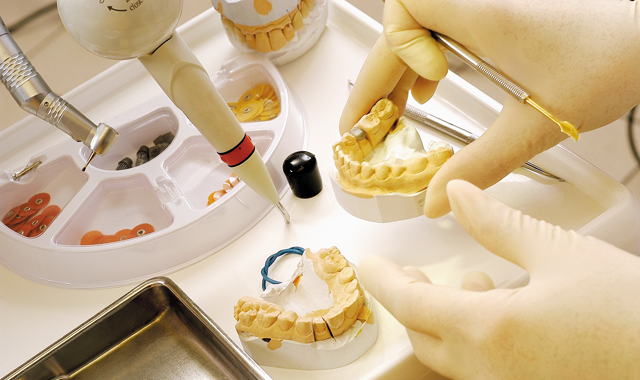
Whether creating restorations through conventional methods, milling, or even 3D printing, there are several material options that labs should keep in their arsenal.
Read more: 5 things you need to know about implants
Click through the slides to check out the 6 materials lab techs need to know.

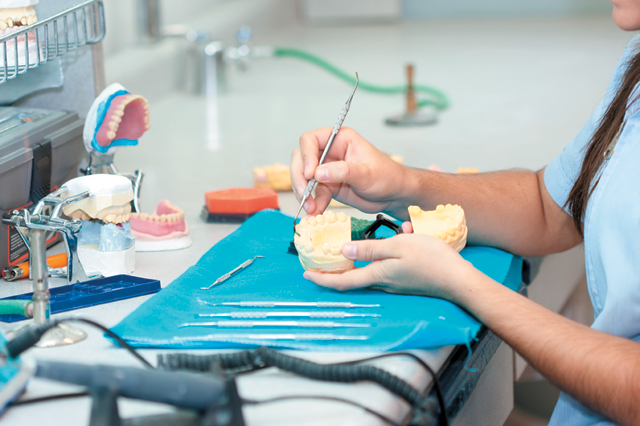
Hybrid zirconias
Esthetics matter, and Jason Atwood, CDT, senior digital solutions adviser, Core3dcentres, likes what manufacturers are doing with hybrid zirconias.
“They are layered products that go from opaque near the gingiva to translucent near the incisal,” he says. “These kinds of multilayered and multishaded blocks have really made an advancement in the past year. There are a few different products on the market. They’re all pretty comparable and quite amazing. They’re definitely worth looking at.”
The advancements seemed to come on all fronts, he says: handling, esthetics and durability. But he is particularly impressed with the materials’ esthetic improvements.
Trending article: 5 ways to get involved with digital dentures
“I remember when multishaded blocks first came out,” Atwood says. “You could almost see the definition between shade; it was almost like looking at Neapolitan ice cream. The new ones have a much more subtle, much more esthetic look to them, and we have been really happy with them. We’ve gotten a lot of positive feedback from our customers and clients and doctors.
“When we first started using those kinds of products, you could see the division between layers,” he continues. “So, we didn’t use it that much. We only used it for certain indications. The new ones are so flexible in the way you can use them. You can position them differently in the block to get the kind of effect or look that you want. It’s really been good for us, in the lab, especially when it comes to anterior restorations, like veneers and anterior crowns. Previously, we were limited to using something like a lithium disilicate, but the esthetics of zirconia have improved so much, we are starting to see it replace some of the lithium disilicate in certain indications, especially for bridgework, and things like that. The hybrid products are typically a lot stronger than the lithium disilicate, and it gives us a little more flexibility in the range of products that we can do.”


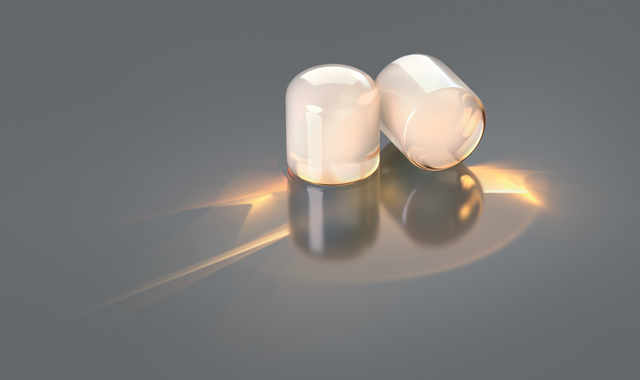
Celtra
Kassandra Costa, lab marketing manager, U.S. for Dentsply Sirona, notes that the company’s Celtra products can serve both conventional and digital workflows.
“Celtra is a zirconia-reinforced lithium silicate material and it comes in two forms: Celtra Duo, which is the millable form, and Celtra Press, which is the pressable form,” Costa says. “The millable form has been on the market for a while, but the Press is new. They both have really great esthetics and color. They actually have an amazing chameleon effect, so they blend very well with the other teeth in the mouth.”
Read more: Using Celtra Press in your lab
That chameleon effect allows Celtra to provide just a few shades and still be able to fit in with neighboring teeth. Pair that with the balance of translucency and opalescence, and it mimics the light-scattering behavior of natural teeth.
“Both Celtra Press and Celtra Duo are very strong, very esthetic and very easy-to-work with materials,” Costa says. “Celtra Press has the added benefit of being even stronger and more esthetic.”


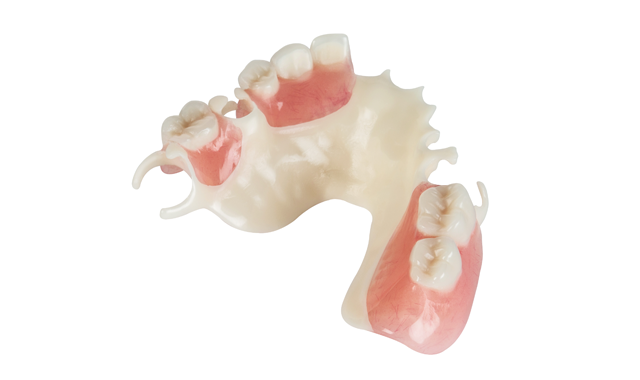
Zirlux
Zahn Dental - the dental laboratory business of Henry Schein Dental - offers a comprehensive selection of CAD/CAM materials under the Zirlux brand, including zirconium materials that provide technicians with a broad range of options for high-quality restorations.
“The Zirlux brand of products offer proprietary zirconium powders and colorful pigments to create the most natural-looking levels of translucency, value, chroma and hue for exceptional shading options in each pre-blended disc,” says Beth Collington, senior manager, digital materials global prosthetic solutions at Henry Schein.
Zirlux brands have many options for labs that employ analog workflows today but want to go digital for more accuracy.
Related reading: Zahn Dental Labs introduces Zirlux Acetal
“Laboratories that still use analog processes can enhance their digital workflows with Zirlux Acetal material,” Collington explains. “This unique thermoplastic material can shorten production time and reduce production costs. This digital material option can also add revenue to a laboratory's bottom line by significantly reducing labor costs by replacing the time-intensive metal investing and casting processes of partial denture frameworks. This material also offers so many features to support additional indications in fabricating prosthetics, such as high tensile, flexural strength, fatigue resistance and hardness, along with very low moisture absorption with no shrinkage. The easy-to-use product has five relevant shades, including a new Pink Acetal color.
“With so many new innovations in the production of digital materials, laboratories can reap the benefits of improved esthetics and performance,” she continues. “To achieve this, customers can rely on Zahn Dental to offer the most diverse product selection, such as our Zirlux brand of products, and state-of-the-art equipment and technology that can help improve operational efficiency and ensure consistent results.”


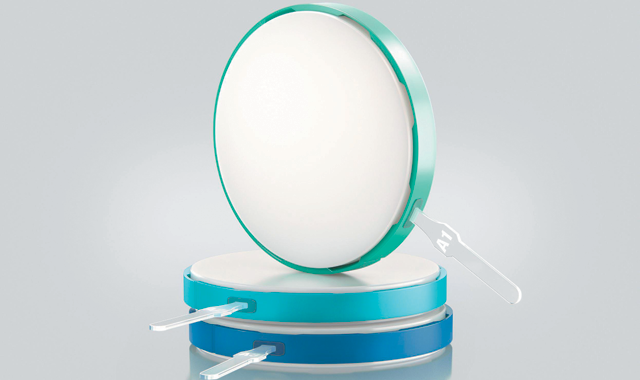
Cercon zirconia
Costa also recommends Dentsply Sirona’s Cercon ht and xt materials. The zirconium oxide materials, she says, offer high level esthetics, along with speed and efficiency in manufacturing.
“Cercon ht has been around for a while, and it’s pre-colored zirconia,” Costa says. “The color matching is very precise. It’s a good, translucent zirconia that has great strength - it’s up in the 1,600 megapascals range.
Trending article: 5 techniques showcasing long-lasting results
“Last year, we came out with Cercon xt, which stands for extra translucent, and that would be used in anterior applications,” she continues. “It’s also pre-shaded and users will achieve really close shade matching with it. It’s substantially more translucent than Cercon xt, but it’s also not as strong, so that is why it’s more appropriate for use in anterior regions.”
Cercon xt and Cercon ht are able to be used in open systems, making them available for most CAD/CAM systems. Additionally, the material is pre-sintered, which allows for control of the material’s strength.


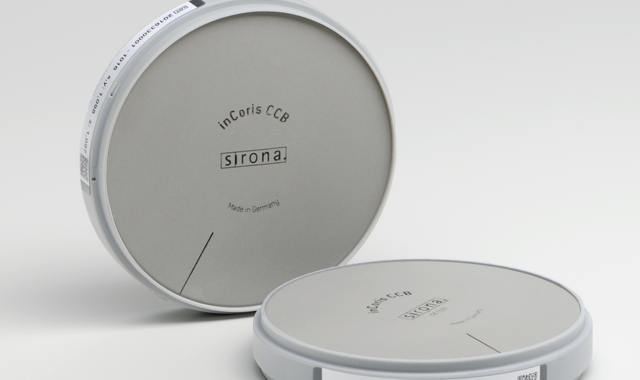
inCoris CCB
Despite the exposure of millable materials, like zirconia, there’s still a demand for metals. Costa calls attention to Dentsply Sirona’s inCoris CCB, a millable cobalt chrome that can be sintered.
“inCoris CCB is used primarily for understructures, like copings,” Costa says. “You could make a digital PFM, for example, a bridge, or a bar-type application.”
Other applications include fully contoured crowns and bridges, copings and bridge frameworks, telescope crowns, bars and attachments.
More from the author: Top 10 worst states to be a lab technician
inCoris CCB is for labs that want to take advantage of metal understructures. Many restorations are still made of non-precious metals, and the inCoris CCB is a sintering metal based on a cobalt chrome alloy that’s first milled while oversized and then compacted by dense sintering in a furnace.
“There are not a lot of millable metals that are also sinterable on the market,” Costa explains. “It’s an easy thing for the lab to mill and sinter it, and it’s not so hard on the mill, like titanium might be. They would mill it in the softer state and then sinter it into the harder coping material. So that makes it a really good, solid base material.”


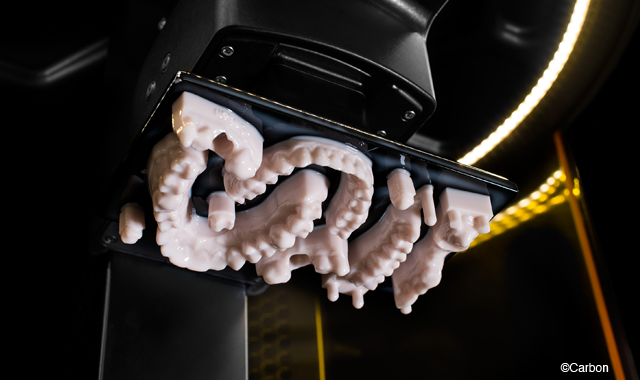
3D printed denture materials
It’s no secret that digital dentistry changed the way labs deliver restorations. And now the ability to 3D print restorations is even more revolutionary.
In the past, however, labs were limited to what they could offer from 3D printed sources. Atwood is excited about recent developments in that field, especially since the materials are now available for 3D printing dentures.
“The Chicago Midwinter saw a few companies with some denture materials that can be 3D printed and are approved for long-term wear in the mouth,” Atwood says. “We’ve been waiting for these for little while. We’ve always had the ability to do 3D printing, but to print materials that can be worn in the mouth is a recent development. That’s really exciting because now they are available, and I think most technicians have been waiting for it, looking for it and now that the availability is there, I think we are going to see an explosion of the types of products hitting the market.”
Atwood says there were two real hurdles for 3D printer denture materials to clear.
Related article: 5 things you need to know about 3D printing
“The FDA approval was definitely one,” he explains. “But I think a lot of the manufacturers still had these products in development. They had to fine-tune some of them.”
For instance, he mentions 3D printing manufacturer Carbon and its offerings.
“They launched their printer last year in Chicago, and they only had a model material available for it,” Atwood says. “They got a lot of comments from people wondering when they would get more materials. Over this last calendar year, they have really focused a lot on developing more dental materials. And this year, when they launched in Chicago, they had a much wider range of products.”
And it isn’t just Carbon offering those materials now.
“All the manufacturers have a much wider range of materials available just from last year,” Atwood says. “It’s been a huge improvement and it’s made 3D printing much more useful, as far as what you can offer from it. That’s exciting for lab people because 3D printing is quick and cost-effective.”
No matter where a lab is in its fabrication methods, technicians should be aware of the options that will give them the best, most esthetic and highest quality results.

Product Bites – January 19, 2024
January 19th 2024Product Bites makes sure you don't miss the next innovation for your practice. This week's Product Bites podcast features new launches from Adravision, Formlabs, Owandy Radiology, Henry Schein Orthodontics, Dental Creations, and Dental Blue Box. [5 Minutes]